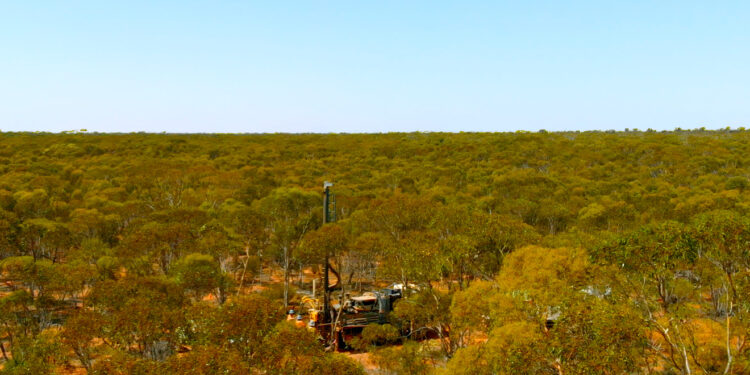Galileo Mining Ltd (ASX: GAL) has identified a new lower zone with high-grade assays from recent drilling at the Callisto palladium-platinum-gold-rhodium-copper-nickel discovery within the company’s 100% owned Norseman project in Western Australia.
“Today’s assay results continue to expand the existing footprint of rich sulphide mineralization at Callisto and demonstrates considerable opportunity for growth as we step out our drilling programmes over the coming months,” Managing Director Brad Underwood said.
“The drill result from NRCD292 is from a new sulphide zone in the same geological position as the original discovery, and our working model is one of multiple mineralized zones in the area.
“This idea is further confirmed by the identification of a new intrusion 250m north of the Callisto discovery. At this location we are seeing disseminated sulphides with the same pattern of metal distribution and the same host rocks. The anomalous drill results in this new area will be followed up with RC drill testing aiming to vector towards higher grade metal zones.
“Meanwhile our diamond drilling is using the same exploration concepts to vector towards a potential source of mineralization at Callisto with 100m step out drilling designed to provide a broad framework of the overall mineralized area.
“With over 5km of prospective rocks along strike to the north, and with multiple mineralized intrusions discovered to date, we believe the opportunity for growth in this new palladium-nickel district is significant.”
Assays have been reported for drill holes NRCD292, NRCD302, NRCD321, NRCD322, NRCD335, and NRC386, from within the Callisto mineralized footprint.
Highlights
Sulphide intersection from new lower zone with high grade assays;
o 10m @2.19g/t 3E1 (1.84g/t Pd, 0.31g/t Pt, 0.04g/t Au), 0.27% Cu & 0.23% Ni from 279m (NRCD292) including 3.0m @3.91 g/t3E (3.12g/t Pd, 0.68g/t Pt, 0.11g/t Au), 0.65% Cu & 0.48% Ni from 280m
• Consistent high-grade mineralization between drill holes on existing sections with significant results including;
o 29m @1.58g/t 3E (1.30g/t Pd, 0.21g/t Pt, 0.07g/t Au), 0.29% Cu & 0.26% Ni from 154m (NRCD302), including 11m @2.44g/t 3E (2.01g/t Pd, 0.32g/t Pt, 0.11g/t Au), 0.49% Cu & 0.36% Ni from 168m
o 25m @1.53 g/t 3E (1.23g/t Pd, 0.23g/t Pt, 0.08g/t Au), 0.22% Cu & 0.26% Ni from 296m (NRCD321), including 3.0m @2.57g/t 3E (2.05g/t Pd, 0.38g/t Pt, 0.14g/t Au), 0.54% Cu & 0.40% Ni from 311m
Mineralization is interpreted as a broad continuous zone of disseminated sulphides which remains open at depth to the east on all sections; open to the north of 6,448,050; and open to the south of 6,447,900.
Logging and interpretation of drill core indicates that Callisto is a separate mineralized sill, with a number of sulphide mineralised zones, that has intruded the pre-existing parent sill. The parent sill has a strong magnetic signature which trends north-northeast. The non-mineralised parent sill outcrops over a 5km strike to the north with opportunity for additional mineralised intrusions within this prospective horizon.
Drilling at Callisto is now focussed on determining the size and grade of the sulphide zones, understanding the relationship with the much larger host sill, and looking for a possible source of the discovery to the east. Assays are pending for a 14 further drill holes.
For further information please visit: https://www.galileomining.com.au/












